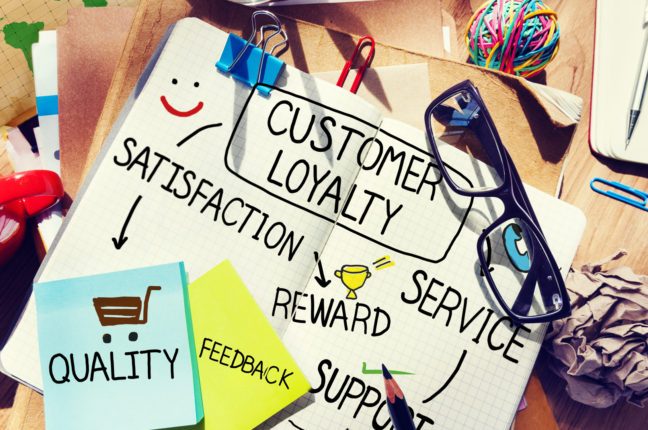In the age of the aggregator, the brand is irrelevant. Columnist Blaise Lucey says it’s all about the customer experience and creating compelling content that’s relevant to your audience.
Culled from Marketing Land
There I was, stuck in the middle seat of an airplane. As I wrenched the seat belt out from under the cushion and wedged my legs together, I wondered: Do these seats keep getting smaller?
This return flight, like my departure, was provided by one airline but “operated” by another. In total, I was graced with flight numbers from three different airways. I really had no sense of where the first airline ended and the other one began. Was the crew part of the latter airline? What about the plane? When I registered for a flight, which airway was I actually paying?
This is the standard customer experience for airline passengers who are just Googling flights and finding tickets for every possible airline at every possible time. The cheaper the better.
Brands are competing by making a product or service easy and cheap, but, ultimately, a lot worse. In turn, this is teaching customers that every brand is interchangeable. That’s a dangerous place to be when a five-minute search can turn up a dozen alternatives to your company.
Brand is irrelevant in the age of disloyalty, because brand is, first and foremost, the customer experience. And today, the customer experience is often identical from start to finish.
The reign of the aggregator
People get rides from Uber, not drivers. They get delivery from Seamless, not restaurants. They get repairs done from Handy, not contractors, and reserve restaurants on OpenTable, not hosts. They get content from Facebook, not from the content creators. They discover products on Google and Amazon, not your website.
Whatever consumers are trying to buy, there are infinite options on the Internet. Digital customers are first and foremost loyal to services that help them navigate infinity.
Aggregators make it very easy to find new alternatives — just about half (47 percent) of customers say they would switch to a competitor within a day of a poor customer experience.
Customers who find your brand from an aggregator aren’t loyal. Take the average Facebook news consumer. Pew Research shows that, on average, a Facebook visitor stays on a news website for around one minute and 41 seconds. Visitors who arrive at the news site directly spend almost 400 percent more time on the site, at an average of four minutes and 36 seconds.
That’s in part why it’s so important to pay attention to the ecosystem wars between Facebook, Google and Apple. Every major brand is trying to become a one-stop destination, especially aggregators.
The customer experience on any major aggregator service like Google, Facebook, Amazon, Netflix and YouTube are all personalized. That degree of personalization takes data. Lots and lots of data.
Marketers don’t have the treasure troves of data like Google or Facebook, but it’s still possible to use analytics to see what will keep customers coming back.
The customer experience = data
Consulting firm Smart Insights shows that, when considering car insurance renewals, 86 percent of consumers do research online before making the purchase. These interactions take place across tablets, PCs and smartphones. The majority of potential online customers (98 percent) perform a branded search to find more information.
The firm found that the typical customer journey to conversion takes place across five websites, five sessions, nine visits and 45 minutes. If the customer is using Google to search, there’s sure to be a lot of competition popping up wherever they click.
Every one of these touch points is an opportunity to connect with your customer. Social media is a crucial platform to keep your audience engaged, even when they’re not ready to buy, because you can’t just depend on your website to drive conversions anymore.
You have to move up the funnel and focus on building content for every stage of the customer journey.
Customer loyalty = content loyalty
The customer journey today is not a funnel; it’s a maze. But by keeping close track of which content resonates the most with your audience on each channel, you can start creating a journey — guided by content — for each prospective touch point.
While brands have built compelling content, many are limited to a single channel. Today, you have to be omnipresent. A piece of content that gets promoted on Facebook should be reflected on other social channels, search, review sites, influencer marketing, paid ads, videos and more.
By building a content campaign that can be broken into pieces across all these different channels, companies can make sure that they don’t get lost in the noise of the aggregator.
Consistent, interesting content is the best way companies can create a customer experience for people who may not have even bought the product yet.
Here are five examples of brands that are creating that kind of experience:
-
Harry’s, a men’s shaving company, has a digital magazine dedicated to men’s fashion and advice for dads. There’s also a store location that doubles as a barber shop.
-
Eyewear company Warby Parker makes Spotify playlists and invites customers to readings by authors inside the Warby Parker store.
-
Social media software company Buffer has built a massive social media following in part fromBuffer Open — articles, quotes and advice that talks about inspiration, work culture and diversity, rather than a product.
-
Apple has built a whole ecosystem of apps and software that only runs on the hardware within the ecosystem. That’s built an identity for a world-renowned brand that customers are passionate about for cutting-edge design, ease of use and functionality, rather than just products.
-
Macy’s ran a digital music festival, Macy’s Summer Vibes, that created an entire movement around upcoming music stars across a lot of different channels, with a 45-minute concert, behind-the-scenes videos and more. In just two weeks, the video of the concert reached 1.3 million views.
All five of these companies have started building content that is relevant at every stage of the customer journey. The content is interesting, engaging, and, ultimately, reminds customers where to shop when they’re ready to make a purchase.
In an age where aggregators find and retrieve a thousand different options for customers to choose from, a real customer experience is not defined by products. It’s defined by interactions between brand and customers.
It’s up to companies to make those interactions unforgettable, wherever they happen during the customer journey.
ABOUT THE AUTHOR:
Blaise Lucey is Senior Content Strategist at Bitly. He’s in charge of developing and distributing content in many formats and channels. He also works closely with the sales team to coordinate content across the company and establish the Bitly brand across the omnichannel, social, and mobile marketing space. Having worked both on the agency and brand side, he has built content programs from the ground up for Fortune 500 companies and start-ups alike and is passionate about bringing great content to life.








